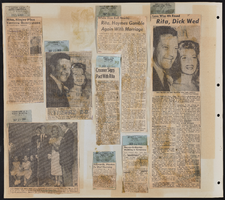Search the Special Collections and Archives Portal
Search Results

Interview with Luciano Acevedo Lopez, July 8, 2004
Date
2004-07-08
Archival Collection
Description
Narrator affiliation: Miner, Reynolds Electrical and Engineering Company (REECo)
Text
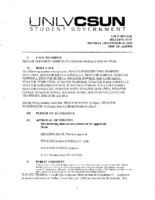
Meeting minutes for Consolidated Student Senate, University of Nevada, Las Vegas, December 06, 2004
Date
2004-12-06
Archival Collection
Description
Includes meeting minutes and agenda.
Text
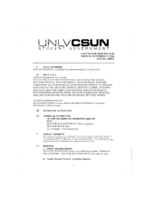
Meeting minutes for Consolidated Student Senate, University of Nevada, Las Vegas, November 22, 2004
Date
2004-11-22
Archival Collection
Description
Includes meeting minutes and agenda.
Text
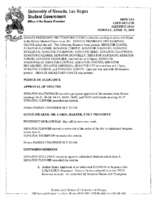
Meeting minutes for Consolidated Student Senate, University of Nevada, Las Vegas, April 12, 2004
Date
2004-04-12
Archival Collection
Description
Includes meeting minutes and agenda.
Text
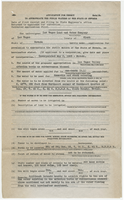
Application for permit to appropriate the public waters of the State of Nevada, November 1939
Date
1939-11
Archival Collection
Description
Application for the Las Vegas Land and Water Company to appropriate the water from a new well on the Las Vegas Ranch. Original Collection: Union Pacific Railroad Collection 97-19
Text

Meeting minutes for Consolidated Student Senate University of Nevada, Las Vegas, March 16, 1989
Date
1989-03-16
Archival Collection
Description
Includes meeting agenda and minutes along with additional information about bylaws. CSUN Session 19 Meeting Minutes and Agendas.
Text
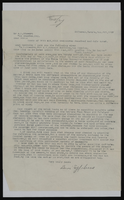
Correspondence, Levi Syphus to Sadie George
Date
1917-04-27
Archival Collection
Description
This folder is from the "Correspondence" file of the Sadie and Hampton George Papers (MS-00434)
Text
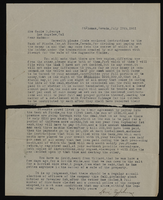
Correspondence, Levi Syphus to Sadie George
Date
1921-07
Archival Collection
Description
This folder is from the "Correspondence" file of the Sadie and Hampton George Papers (MS-00434)
Text
Pagination
Refine my results
Content Type
Creator or Contributor
Subject
Archival Collection
Digital Project
Resource Type
Year
Material Type
Place
Language
Records Classification

